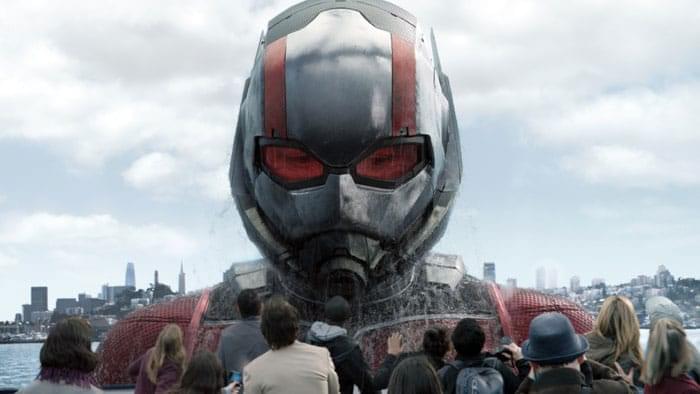
Every Texan who reviews this movie is obligated by state charter to talk about their feelings for the actual Alamo, so here goes. Like all Texas middle schoolers, I had to take Texas History. As you might guess, one of the high points in learning of the state’s struggle for independence from Mexico was the story of the siege of the Alamo and the massacre of its defenders. We were all shown the pictures of Jim Bowie, bedridden with pneumonia, firing at General Santa Anna’s troops as they burst into his room. We’re also told how 180-odd men gave their lives in what was more or less a delaying tactic against the Mexican army, taking almost 600 of the enemy with them. I’ve visited the old mission in San Antonio many times, and it’s still impressive to walk through. As valiant tales of doomed heroism go, that of the Alamo tough to beat.
So why is John Lee Hancock’s film so disappointing?
For starters, it’s PG-13. How do you make a film depicting such a savage battle without showing the horrible brutality of the struggle? The answer is: you don’t. Or you take director Hancock’s lead and pad the first hour and forty-five minutes of the film with somber proclamations and uneasy gazes over the gathering hordes of enemy troops. “The Alamo” might as well be a TV-movie – or better yet, a miniseries – for all the slow exposition and lack of violence. Original director Ron Howard seemed to know this, and bowed out of the film when informed Buena Vista didn’t want an ‘R’ rating.
Hancock works to humanize the now legendary heroes of the Alamo, whom he presents as flawed men drawn to Texas by the promise of a fresh start. To begin with, we have Dennis Quaid, who portrays General Sam Houston as a bit of an alcoholic con man, goaded into heroism only after the Alamo is besieged. Quaid is convincing enough, but gets little to do until the end, where he makes the expected monologue and leads the Texans in the final battle against Santa Anna. Jason Patric is better as Bowie, though the subplot involving his dead wife and her sister is, frankly, a waste of time. Patrick Wilson comports himself well as garrison commander William Travis, who chooses duty over family. And while I’m not much of a Billy Bob Thornton fan, he is the sole standout as David (Don’t Call Me “Davy”) Crockett. Those enamored of John Wayne’s turn as the Coonskin Capped One won’t find a lot to latch on to with Thornton’s timorous and self-deprecating Crockett. Ironically, Thornton’s portrayal succeeds the best in Hancock’s strategy, and will probably be the one that pisses people off the most.
If the protagonists of our story are a little imperfect, their nemesis is predictably loathsome. Emilio Echevarría’s Santa Anna may not be as villainous a caricature as, say, Jason Issacs in “The Patriot,” but he’s still a preening megalomaniac with a taste for young girls who flees the final battle and tries to disguise himself as a foot soldier to avoid capture. It’d be laughably clichéd if it wasn’t actually true.
Oh, Hancock scores on a number of good iconic moments. Here’s the Alamo and its defenders silhouetted against a brilliant Texas sunset. There’s Bowie brandishing his eponymous knife. You can feel the film straining for “epic” status, but the repetitive speeches about “what Texas means to us” and the “A-Team” style violence – as in, slow motion explosions that cause soldiers to catapult through the air – keep that from happening. There’s also little sense of impending doom. The Alamo’s defenders go about their day, not showing much in the way of fear or resignation, even after Travis informs them there is likely no help coming.
When making a movie that yearns to be larger than life, why omit some of the greatest (though possibly apocryphal) details? Where was Travis drawing a line in the sand with his sword, inviting those who would stand and fight to cross? Why ignore the fact that Houston’s defeat of Santa Anna in the Battle of San Jacinto was facilitated by the Mexican commander’s failure to post sentries, and that many in the Mexican army were enjoying their afternoon siestas? If Hancock was trying to play up the importance of the whole campaign, why drop the ball during the pivotal battle?
Of course, another cry heard alongside “Remember the Alamo!” at San Jacinto was “Remember Goliad!,” commemorating the execution of 342 captured Texas soldiers shortly after the Alamo’s fall. This isn’t even mentioned in the film. Is it necessary? Perhaps not, but ignoring it seems odd in a movie working so hard to resonate with its audience.
You’ll probably hear better reviewers than me refer to “The Alamo’s” “Pearl Harbor”-esque ending, but at least the Battle of San Jacinto actually was crucial to the republic’s independence and, in large part, a retaliation for the slaughter of the defenders in San Antonio and Goliad. It certainly isn’t an analogy to the Doolittle raid scene in “Pearl Harbor,” a movie which makes “The Alamo” look like “All Quiet on the Western Front.”
“The Alamo” deserves credit for beautiful sets and the obvious care that went into reconstructing the old town of San Antonio de Bexar, as well as for Thornton’s performance. Unfortunately, the stultifying dialogue and lack of real tension sink the film. “The Alamo” isn’t so much Hollywood cheese as it is a big bowl of weak queso that could’ve used a couple handfuls of jalapeños.
Disagree with this review? Think you can write a better one? Go right ahead in Film Threat’s BACK TALK section! Click here>>>
